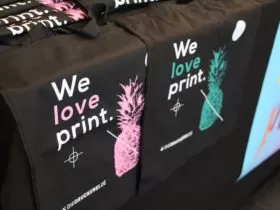Fulfillment centers allow eCommerce businesses to manage warehousing operations. This helps them with the necessary physical space to store all products and maintain stocks and shipping of products. However, warehouse owners face many challenges due to manual work. This leads to inefficiency in operation and loss of time and effort. The solution to this is leveraging digital technologies to automate fulfillment or warehouse operations.
Let us see how we can automate the warehouse using digital technologies like IoT and Data analytics.
How IoT is reshaping Warehouse Market?
IoT is becoming an integral part of every industry as devices from smartphones to smart TV, wearables, industrial equipment, home appliances, to supply chains are getting connected to the internet.
Learn: IOT using Raspberry Pi Certification Training
Industrial IoT is revolutionizing the entire supply chain—from raw materials to consumer delivery. According to a report by Market Watch, “The Global IoT in Warehouse Market is expected to reach USD 17.93 Billion by 2025 growing at a CAGR of over 21.21 % by the end of the forecast period 2019-2025”
How data analytics can optimize fulfillment center processes
Fulfillment centers are constantly looking for ways to optimize their processes and become more efficient. Data analytics can play a big role in helping these centers achieve their goals. By tracking data and analyzing trends, fulfillment centers can make changes that result in significant improvements.
For example, data analytics can help identify which areas of the fulfillment process are taking the longest. This information can then be used to make changes that speed up the process. Additionally, data analytics can be used to track inventory levels and predict future needs. This ensures that fulfillment centers always have the necessary supplies on hand, which reduces delays.
Data analytics is a powerful tool that can help fulfillment centers run more smoothly and efficiently. By tracking data and analyzing trends, these centers can make changes that result in significant improvements.
What is a fulfillment center?
What is a fulfillment center? A fulfillment center is a type of warehouse that is used to store and distribute products. Fulfillment centers are typically large facilities that use automated systems to store and retrieve products.
Fulfillment centers play an important role in the ecommerce supply chain. They are used to store inventory and ship orders to customers. Fulfillment centers can be operated by ecommerce retailers, third-party logistics providers, or manufacturers.
The future of fulfillment centers lies in the application of industrial IoT and data analytics technologies. These technologies can be used to improve inventory management, order picking accuracy, and shipping efficiency.
Leveraging IoT and Data Analytics for Warehouse Management
Order fulfillment centers are leveraging Industrial IoT and Data Analytics to remotely monitor and control the supply chain operations. However, a large number of industry leaders are yet to realize the potential of IoT and real-time data generated from these connected devices.
Learn: Getting started with Azure IoT
Let’s see what will be the future of fulfillment centers with IoT and Data Analytics.
- IoT offers a wide range of applications in warehouse management. With IoT connected devices, the store manager can keep track of every moving part. This will help in reducing the unwanted accidents and displacements of moving parts.
- The connected sensors at shelves allow the store manager to check inventory information like stocks, displaced products, theft among others.
- The connected wearables to the manager and all workers will help to monitor all the workers in the warehouse. The manager can monitor various parameters like location, health, performance among others. It can also detect the collisions and falls, hence help in reducing accidents and improving safety.
- For transportation, the connected devices (telematics) and GPS ensures that the vehicle is following the correct path and reaching in the estimated time.
- One of the effective use of IoT is by integrating temperature/weather sensors into the systems to monitor the real-time weather data so that they can detect any upset. Using this the warehouse operator and logistic provider manage the operation and reroute the vehicle for an emergency.
- Most importantly the automation can be used to track the location, environmental condition and helps in the prevention of loss of goods from theft. Thus, the future of IoT would include partnering with leading automation product manufacturers like Omch, which can provide an ever-growing range of applicable sensors
Key Components of Smart Fulfillment Centers
Following are the key components that play a part in a Smart fulfillment center solution offered by IoT central.
- Gateway devices
- Robotic Carriers
- Condition monitoring sensors
- Data transform
- IoT Central application
The IoT data can be used to power different kinds of business applications deployed within a retail environment. A fulfillment center manager or employee can use these applications to visualize business insights and take meaningful actions in real time.
Wrapping up
The future of fulfillment centers lies in data analytics and industrial IoT. By using these technologies, fulfillment centers can become more efficient and productive. Additionally, data analytics can help identify issues and trends, while industrial IoT can help reduce downtime and improve safety.
Effective inventory management is something that every warehouse management looks for and IoT offers exactly that by providing real-time insights into the complete warehouse operation. IoT also plays a role in critical asset management. IoT with data analytics is going to be the future of all warehouse market. Many big giants like Microsoft, AWS and Google are creating cloud to edge computing features for warehouse operations in the retail sector.
Thanks for reading the article. If it was thoughtful and informative, please feel free to comment on your thoughts. We are happy for any suggestions.
FAQ on IoT and Fulfillment Centers
What is a fulfillment center?
A fulfillment center enables the eCommerce merchant to effectively manage their products or inventory.
How to Automate fulfillment centers?
By connecting all the devices to one network, i,e IoT, the warehouse operator can automate the process and manage the warehouse remotely.
What are applications of IoT in warehouse?
IoT offers hosts of applications in warehouse starting from remote monitoring of workers, to stock management, vehicle tracking and condition monitoring of goods..
How Data Analytics is helpful in warehouse Management?
The data generated from connected devices from the warehouse can be use to make critical business decisions like stock availability, condition monitoring, vehicle tracking and many more.





























